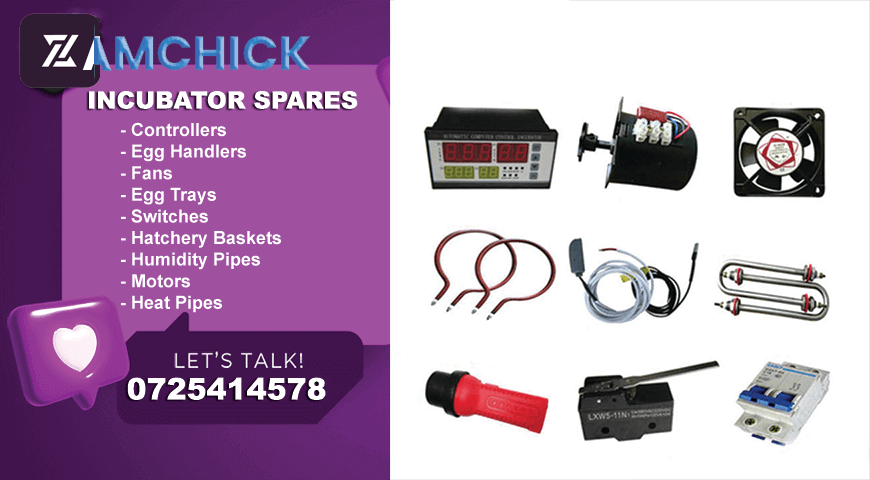Thanks to chicken domestication, acquiring that perfectly boiled egg to elevate a steaming bowl of ramen no longer means stalking wild nests. Fresh-from-the-nest eggs are one of the major perks of chicken keeping—but cultivating a flock comes with many decisions. Chicken keepers must weigh the best feed, the best housing, and even the best incubator for hatching eggs and raising chicks.
- Best Incubator for Beginners: Fully Automatic Incubator
- Best Automatic Incubator: Farm Innovators Incubator
- Best Small Incubator with Extra Features: 12-egg Incubator
- Best Incubator for Hatching Varied Poultry: 40-egg Incubator
- Best Budget Incubator: Egg Incubator
From Hen to Egg Incubator
Selecting the best incubator for the job is about considering chicken biology with the individual needs of the chicken keeper and flock. There are hundreds of species of chickens scratching around the planet today, but they all belong to one single species: These birds are beloved by humans, who have kept them as domestic livestock for about ten thousand years. In the wild—and in flocks where mother hens hatch and brood chicks—clutches of two to twelve eggs keep warm and moist under a hen until they pip. The whole thing takes about 21 days.
Many chicken keepers continue to rely on mother hens to do this work, but that’s not always possible. Fortunately, chicken egg incubators meet the needs of keepers interested in large-scale egg hatching as well as keepers who simply prefer artificial egg incubation. The best egg incubator for the job holds the right number of eggs and maintains the ideal temperature and humidity for egg incubation. Some incubators automatically turn the eggs and provide extra features like in-device candling to minimize handling. One of the first considerations when choosing the best egg incubator is size. An incubator requires a stable surface with steady access to electricity. It’s best if the room that houses the incubator is climate-controlled with minimal variation in temperature over the incubation period. It should never be operated in direct sunlight or drafty places. This keeps the incubator from struggling to keep those eggs at a steady temperature—and prevents the worst outcome of eggs failing to hatch or embryos dying from overheating.
An incubator that’s too small won’t accommodate the number of eggs the keeper hopes to incubate. An incubator that’s too big has downsides, too. It’s optimized to work most efficiently when the incubator is full, so grossly under filling the device—like hatching half a dozen eggs in an incubator designed for 40—may depress its performance.
Best Incubator for Beginners: Fully Automatic Incubator
Space Saver
This incubator has a small footprint and clear digital display.
For chicken keepers who want to hatch a dozen eggs, a small, fully automatic digital incubator is the best egg incubator choice. This option features an intuitive display for monitoring the temperature of a wide range of poultry eggs.
Not Too Hot, Not Too Cold
Chicken eggs are like Goldilocks: they want their incubating conditions to be just right. A mother hen’s body temperature ranges from 105 to 106 degrees, translating to a toasty 100 to 101 degrees for the clutch she’s sitting on. Her body and the ground work together to ensure those eggs don’t get too dry.
Hatching eggs in an incubator mimics this by holding a steady temperature as close to 100.5 degrees as possible for the entire 21 days. When temps regularly dip below that ideal, the hatch could be delayed. When they creep above that level, the embryos could die from overheating, or the chicks could struggle to emerge from the egg membranes. The eggs also require proper humidity: around 60 percent for the duration of incubation then 75 percent when the hatch approaches.
The correct temperature and humidity settings for a chicken egg incubator depend on the type of incubator the keeper uses. Forced-air incubators have fans to circulate the air. These should be set at 99 to 99.5 degrees with a relative humidity of 60 to 65 percent for the duration. Still-air incubators don’t have fans. They require a temp set slightly higher at 100 to 101 degrees with a relative humidity of 60 to 65 percent during incubation—but cranked up to 75 percent a few days before the hatch.
A high-yield, an air-circulating incubator is ideal for hatching larger clutches. The digital display shows the temperature, humidity, and expected hatch day. Keepers can rely on automatic turning and in situ candling to minimize disruptions for the clutch.
Turning
A mother hen doesn’t just sit on the eggs and hold a steady temp. She uses her beak to reach over the eggs to gently scoop and roll them toward her. This regular turning of the eggs in her clutch ensures even heating. When hatching eggs in an incubator, it’s important to turn the eggs just like a mother hen. Chicken keepers can do this manually by giving each egg a half-turn three times a day. However, opening the incubator causes minor fluctuations in the temperature and humidity inside the device—so it should be done quickly and with care. Some chicken egg incubators perform this task automatically, turning the eggs at regular intervals. The major benefits of an incubator with an automatic turner are that the incubator doesn’t need to be opened, and the keeper isn’t tied to the incubator three times a day.
Best Small Incubator with Extra Features:
A machine with black motor to work in the middle of it and with a line of eggs near to each other into the low part of egg incubator.
Smart Design
This incubator automatically stops turning the eggs before they’re ready to hatch—just like a hen. Keepers can easily hatch a dozen eggs without disturbing the clutch, thanks to this small egg incubator’s automatic turning and in-place candling. It circulates the air and even allows the keeper to add water without opening the device.
Can You Handle the Candle?
By far, one of the reddest parts of incubating chicken eggs is monitoring the development of the embryos inside the egg. This is done via candling or holding the egg up to a light source to see inside the egg.
Candling makes it possible to see hairline cracks in the shell and the vascular architecture of the embryo as well as the air cell. This little pocket of air grows as the chick develops and is linked to proper humidity—so some keepers track the size of the air cell by gently marking with a pencil after candling. This allows for adjustments in humidity level to improve the size of the air cell and prevent the chick from becoming trapped inside the egg membranes when hatch time arrives. When hatching eggs in an incubator, it’s essential to candle the eggs regularly—usually at days 5, 10, and 17. This ensures the keeper removes any eggs that aren’t developing or are no longer viable. If an embryo dies and remains in the incubator, heat enables bacteria to grow and can cause the bad egg to explode. Since chicken eggs are porous, this could introduce those bacteria into the healthy eggs. As with turning, removing eggs for candling causes some fluctuations in temperature and humidity. And it’s possible to drop or damage an egg during candling. Some incubators solve this problem by allowing the keeper to candle the eggs inside the incubator by pressing a button to turn on a light directed at each egg.
Best Incubator for Hatching Varied Poultry: 40-egg Incubator
A translucent bowl with a few eggs inside, a wide box and a small yellow bird under it.
Versatile Option
This incubator has movable dividers for hatching different types of eggs simultaneously. Magicfly
For keepers interested in hatching a variety of eggs, this customizable incubator has dividers to make that simple. Plus, it sounds an alarm and flashes a warning light if the temperature or humidity gets too high or low.
Egg Incubation Doesn’t Have to Be Spendy
Chicken keepers who plan on incubating chicken eggs frequently or in large quantities will want to invest in a high-quality incubator with all the bells and whistles. This streamlines the work of hatching eggs by automating many of the tasks, such as turning and candling the eggs.
Keepers who hatch eggs less frequently can save money by choosing a simpler incubator. After all, manually turning and candling those eggs may be part of the fun for folks who only plan on hatching eggs once or a few times over the course of keeping chickens.
When selecting a budget incubator, look for an option without extra features. A solid budget machine will focus on doing its one task—maintaining a steady temperature and humidity level—reliably for the long haul.
Best Budget Incubator: Homdox Egg Incubator
Eight eggs inside a translucent bowl with a strong yellow machine with a black box in front of it with instruction into it.
Simple Design
This mini-incubator is perfect for hatching small clutches and has an open design so kids can watch the action. Homdox
The Homdox incubator maintains steady conditions with an easy-to-read display. Its small footprint and simple design are perfect for occasional hatching.
FAQs
Q: What does an incubator do for eggs?
An incubator for eggs maintains a clutch at the proper temperature and humidity level to ensure hatching. Some incubators also turn the eggs automatically and even make it possible to candle the eggs without removing them from the incubator.
Q: How do I choose an egg incubator?
To choose an egg incubator, consider the size of the clutch, the type of incubator (forced-air or still-air), and which extra features are important to the individual chicken keeper.
Q: What percentage of incubated eggs will hatch?
The percentage of incubated eggs that hatch depends on the conditions inside the incubator and the health of the eggs. In general, 70 to 90 percent of healthy eggs will hatch when kept properly in an incubator.
Buy Incubators in Nairobi, Kenya
The Best Egg Incubator: Ideal Conditions and All the Extras
The best egg incubator meets the needs of the clutch by maintaining ideal temperature and humidity, ensuring that the eggs develop and hatch properly. Chicken keepers who plan on regularly hatching eggs and raising chicks should look for extra features like automatic egg turning and in-device candling to make the work of incubating chicken eggs simple and enjoyable.

